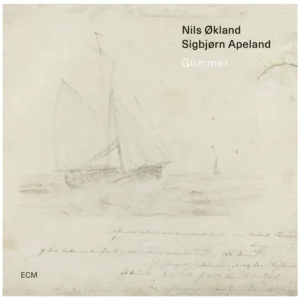Comme une parenthèse dans l’agitation du monde, un éloge de la lenteur tissé par deux Norvégiens, le violoniste Nils Okland et le claviériste Sigbjorn Apeland. Minimaliste et planant, un voyage beau et envoûtant.
Patrick Labesse, Le Monde
Hello, Sigbjørn, (…) No wonder, GLIMMER is placed at the centre in my radio show being the first of a number of albums dealing with landscapes, old roots and homes, the spaces of childhood etc.. Here my questions…
1) it is maybe the quietest of all albums you have made with Nils Økland and his hardanger fiddle and violin, even more quiet than your other duo album LYSØEN. My sensation (which may be very wrong) is that you played even the old folk songs more slow, more adagio than the old sources may sound or siggest. To kind of intensify the material, maybe! In a sequence of 15 tracks, and staying in this slow motion mode, even the tiniest changes of tempo or the suggestion of a rhythm, can have quite a dramatic impact while listening. So what (forget about my assumptions if they are wrong) was the overall idea of GLIMMER? And can you exemplify your approach on one composition (maybe with a little story about an original song)?
2) Knowing that some of the traditionals refer to regions of Norway in which you two grew up – (Nord-Rogaland and Sunnhordland (Haugalandet) – what was making this music on a personal level for you? Did certain memories of your early years became more vivid, was it emotionally a very deep experience when letting you kind of fall back into an early period of your life? I mean: to get back into contact with a) the places of childhood and b) old songs that may be centuries old and still resonate from a time long gone – has certainly an impact on you…
4) Did your own compositions for GLIMMER kind of grew out of the research and the playing of the old material, as a kind of „echo space“ of the old songs? Can you speak about one of your compositions, a little story around it?
5) Last question: what makes for you the harmonium with all its wonderful imperfections an ideal partner for such time travels?
Thanks, kind regards, Michael Engelbrecht!

